 Early in 2008, workers at a government-owned textile factory in the Egyptian mill town of El-Mahalla el-Kubra announced that they were going on strike on the first Sunday in April to protest high food prices and low wages. They caught the attention of a group of tech-savvy young people an hour’s drive to the south in the capital city of Cairo, who started a Facebook group to organize protests and strikes on April 6 throughout Egypt in solidarity with the mill workers. To their shock, the page quickly acquired some 70,000 followers.
Early in 2008, workers at a government-owned textile factory in the Egyptian mill town of El-Mahalla el-Kubra announced that they were going on strike on the first Sunday in April to protest high food prices and low wages. They caught the attention of a group of tech-savvy young people an hour’s drive to the south in the capital city of Cairo, who started a Facebook group to organize protests and strikes on April 6 throughout Egypt in solidarity with the mill workers. To their shock, the page quickly acquired some 70,000 followers.
But what worked so smoothly online proved much more difficult on the street. Police occupied the factory in Mahalla and headed off the strike. The demonstrations there turned violent: Protesters set fire to buildings, and police started shooting, killing at least two people. The solidarity protests around Egypt, meanwhile, fizzled out, in most places blocked by police. The Facebook organizers had never agreed on tactics, whether Egyptians should stay home or fill the streets in protest. People knew they wanted to do something. But no one had a clear idea of what that something was.
The botched April 6 protests, the leaders realized in their aftermath, had been an object lesson in the limits of social networking as a tool of democratic revolution. Facebook could bring together tens of thousands of sympathizers online, but it couldn’t organize them once they logged off. It was a useful communication tool to call people to – well, to what? The April 6 leaders did not know the answer to this question. So they decided to learn from others who did. In the summer of 2009, Mohamed Adel, a 20-year-old blogger and April 6 activist, went to Belgrade, Serbia.
The Serbian capital is home to the Center for Applied NonViolent Action and Strategies, or CANVAS, an organization run by young Serbs who had cut their teeth in the late 1990s student uprising against Slobodan Milosevic. After ousting him, they embarked on the ambitious project of figuring out how to translate their success to other countries. To the world’s autocrats, they are sworn enemies — both Venezuela’s Hugo Chávez and Belarus’s Aleksandr Lukashenko have condemned them by name. “They think we are bringing a revolution in our suitcase,” one of CANVAS’s leaders told me. But to a young generation of democracy activists from Harare to Rangoon to Minsk to Tehran, the young Serbs are heroes. They have worked with democracy advocates from more than 50 countries. They have advised groups of young people on how to take on some of the worst governments in the world – and in Georgia, Ukraine, Syria-occupied Lebanon, the Maldives, and now Egypt, those young people won.
As nonviolent revolutions have swept long-ruling regimes from power in Tunisia and Egypt and threaten the rulers of nearby Algeria, Bahrain, and Yemen, the world’s attention has been drawn to the causes – generations of repressive rule – and tools – social networking sites like Facebook and Twitter – animating the wave of revolt. But as the members of the April 6 movement learned, these elements alone do not a revolution make. What does? In the past, the discontented availed themselves of the sweeping forces of geopolitics: the fall of regimes in Latin America and the former Soviet bloc was largely a product of the withdrawal of superpower support for dictatorships and the consolidation of liberal democracy as a global ideal. But the global clash of ideologies is over, and plenty of dictators remain – so what do we do?
The answer, for democratic activists in an ever-growing list of countries, is to turn to CANVAS. Better than other democracy groups, CANVAS has built a durable blueprint for nonviolent revolution: what to do to grow from a vanload of people into a mass movement and then use those masses to topple a dictator. CANVAS has figured out how to turn a cynical, passive, and fearful public into activists. It stresses unity, discipline, and planning – tactics that are basic to any military campaign, but are usually ignored by nonviolent revolutionaries. There will be many moments during a dictatorship that galvanize public anger: a hike in the price of oil, the assassination of an opposition leader, corrupt indifference to a natural disaster, or simply the confiscation by the police of a produce cart. In most cases, anger is not enough – it simply flares out. Only a prepared opponent will be able to use such moments to bring down a government.
“Revolutions are often seen as spontaneous,” Ivan Marovic, a former CANVAS trainer, told me in Washington a few years ago. “It looks like people just went into the street. But it’s the result of months or years of preparation. It is very boring until you reach a certain point, where you can organize mass demonstrations or strikes. If it is carefully planned, by the time they start, everything is over in a matter of weeks.”
CANVAS is hardly the first organization to teach people living under dictatorship the skills they can use to overthrow it; the U.S. government and its allies have funded democracy-promotion organizations around the world since the early years of the Cold War. Living under two dictatorships – Chile under Augusto Pinochet and Nicaragua under the Sandinistas – and visiting perhaps a dozen others, I had seen armies of them at work and served as an election monitor myself. But I had never seen anything like CANVAS.
Traditional democracy-promotion groups like to collaborate with well-credentialed opposition parties and civil society groups; CANVAS prefers to work with rookies. The theory is that established parties and organizations under a dictator are usually too tired and tainted to be able to topple him, and that hope rests instead with idealistic outsiders, often students. The Serbs are not the usual highly paid consultants in suits from wealthy countries; they look more like, well, cocky students. They bring a cowboy swagger. They radiate success. Everyone they teach wants to do what the Serbs did.
If CANVAS has torn up the old democracy-promotion playbook, it’s because the group’s leaders have drawn up a new one, taken from their own firsthand experience. The group traces its roots to an October 1998 meeting in a cafe in Belgrade, where Popovic, a tall, sharp-featured man, then 25 and a student of marine biology at Belgrade University, had called several of his fellow students together. At the time, Milosevic had been in office for nine years and was firmly entrenched in power. He had started and lost three wars and was in the process of launching a fourth, in Kosovo. Popovic and his friends had been active in student protests for years. They had marched for 100 days in a row, but their efforts had yielded next to nothing. “It was a meeting of desperate friends,” Popovic says. “We were at the bottom of a depression.”
The students christened themselves Otpor! – “Resistance!” in Serbian – and began rethinking revolution. The first and most daunting obstacle was the attitude of their countrymen. Surveys taken by the opposition showed that most Serbs wanted Milosevic to go. But they believed his ouster was simply impossible, or at least too dangerous to try. And Serbia’s extant political opposition was hardly inspiring: Even the anti-Milosevic parties were largely vehicles for their leaders’ personal ambitions.
But Otpor’s founders realized that young people would participate in politics – if it made them feel heroic and cool, part of something big. It was postmodern revolution. “Our product is a lifestyle”, Marovic explained to me. “The movement isn’t about the issues. It’s about my identity. We’re trying to make politics sexy.” Traditional politicians saw their job as making speeches and their followers’ job as listening to them; Otpor chose to have collective leadership, and no speeches at all. And if the organization took inspiration from Gandhi and Martin Luther King Jr., it also took cues from Coca-Cola, with its simple, powerful message and strong brand. Otpor’s own logo was a stylized clenched fist – an ironic, mocking expropriation of the symbol of the Serb Partisans in World War II, and of communist movements everywhere.
Otpor steered clear of the traditional opposition tactics of marches and rallies – partly out of necessity, because the group didn’t have enough people to pull them off. Instead of political parties’ gravity and bombast, Otpor adopted the sensibility of a TV show its leaders had grown up watching: Monty Python’s Flying Circus. Its daily work consisted of street theater and pranks that made the government look silly and won coverage from opposition media. Wit was perhaps not always achieved, but it was always the aim.
The most famous stunt involved an oil barrel painted with Milosevic’s picture. Otpor rolled it down a busy street, asking people to insert a coin in a slot for the privilege of whacking Milosevic with a bat. This was Otpor’s favorite kind of prank, a dilemma action: It left the regime damned either way. If the government had let the barrel roll, it would have looked weak. But when the police stepped in, the optics were no better: The Otpor members fled, and the opposition TV the next day showed pictures of the police “arresting” a barrel and loading it into the police van. The country sniggered at these pranks – and signed up for Otpor.
Rather than trying to avoid arrests, Otpor decided to provoke them and use them to the movement’s advantage. After a few months it became evident that while police would rough up Otpor members, torture was rare and few of them would even be kept overnight. When any Otpor member was arrested, the organization sent a noisy crowd to hang out on the street outside the police station. Detainees would emerge from the police station to find a pack of opposition journalists and a cheering crowd of friends. Young men competed to rack up the most arrests. If wearing Otpor’s signature fist-emblazoned black T-shirt made you an insider in the revolution, getting arrested made you a rock star. People who once thought of themselves as victims learned to think of themselves as heroes.
Two years after its founding, Otpor’s 11 members had become more than 70,000. “The signal thing they did that should never be lost is that they made it OK for Serbs to say publicly that the regime was not invincible, that many Serbs shared a sense that change could come,” said James O’Brien, the Clinton administration’s special envoy to the Balkans. By the time Milosevic ran for reelection as president of Yugoslavia in September 2000, Otpor’s prolonged protest campaign – and Milosevic’s attempts to suppress it – had eroded the president’s popularity and emboldened and helped to unify the opposition. When Milosevic refused to concede defeat to opposition candidate Vojislav Kostunica, Otpor’s example of disciplined nonviolence, along with its masses of activists, were crucial in convincing Serbia’s security forces to defy Milosevic’s orders to shoot at the protesters. On Oct. 7, the embattled president resigned. The unthinkable had happened. For the young Serbs, the next step was figuring out how to export it.
Within a few months of Milosevic’s ouster, Otpor’s leaders began to get calls from democracy activists in other countries eager to copy the movement’s success. Slobodan Djinovic, one of Otpor’s original organizers, began traveling to Belarus, meeting clandestinely with a student movement there. It was soon infiltrated, however, and eventually collapsed.
Djinovic had more success in Georgia, where a group of young people had founded a movement called Kmara! (“Enough!”). In 2002, Djinovic and other Otpor leaders began visiting, and hosting Kmara students in Serbia. After Eduard Shevardnadze, the former Soviet functionary who had served as Georgia’s president since 1995, stole the country’s November 2003 elections, a movement led by Kmara forced him out in what became known as the Rose Revolution. It was followed by the Orange Revolution in Ukraine, where former Otpor activists spent months advising the Pora (“It’s Time”) youth movement.
On a trip to South Africa to train Zimbabweans in 2003, Djinovic and Popovic decided to establish CANVAS. At the time, Popovic was a member of parliament, but he stepped down in 2004, preferring a career as an organizer and a revolutionary. Djinovic had founded Serbia’s first wireless Internet service provider in 2000 and was well on his way to becoming a mogul. Today he is head of Serbia’s largest private internet and phone company and funds about half of CANVAS’s operating expenses and the costs for half the training workshops out of his own pocket. CANVAS has four and a half staff employees. The trainers are veterans of successful democracy movements in five countries and are paid as contractors. CANVAS participates in some workshops financed by the Organization for Security and Cooperation in Europe, the United Nations Development Program, an international NGO called Humanity in Action, and Freedom House, an American group which gets its money from the U.S. government. But CANVAS prefers to give Washington a wide berth, in part due to Otpor’s experience. Like the entire opposition to Milosevic, Otpor took money from the U.S. government, and lied about it. When the real story came out after Milosevic fell, many Otpor members quit, feeling betrayed.
Most of CANVAS’s work is with democracy activists from the middlingly repressive countries that make up the majority of the world’s dictatorships. All its successes have been; the Serbs have helped overthrow the low-hanging fruit of autocracy. Whatever one might say about Shevardnadze’s Georgia, it wasn’t North Korea. So last year I decided to watch Popovic and Djinovic work with activists from a country that would put their ideas to the severest test yet: Burma.
In 1962, a military coup led by Gen. Ne Win put an end to the democratic government that had ruled Burma since its independence 14 years earlier. In the intervening half-century there have only been a few brief moments when it was reasonable for the Burmese to hope for something better. Anti-government demonstrations erupted for months in 1988, but ended after soldiers killed thousands of protesters. Two years later, Burma held the first free elections since the coup. But when Aung San Suu Kyi’s party, the National League for Democracy, won an overwhelming victory, the regime nullified the results. Mass protest did not return until September 2007, when the government removed oil subsidies without warning and the price of some fuels rose by 500 percent. Buddhist monks protested the price hikes, only to be beaten by security forces. A monk in Rangoon named Ashin Kovida, a small, soft-spoken man of 24, was outraged. He sold his robes and used the money to make and photocopy a leaflet inviting the monks in Rangoon’s monasteries to march. On Sept. 19, about 400 monks did, joined by students in what became known – after one of the colors of the monks’ robes – as the Saffron Revolution.
Kovida, who now lives in exile in California, told me he was inspired by Bringing Down a Dictator, a documentary about the fall of Milosevic that had been subtitled in Burmese and circulated clandestinely in the country. He thought the government would not dare to shoot monks. He was wrong. Dozens of people were killed, and thousands of monks and nuns were arrested; some of them were handed sentences of more than 60 years. Burma’s opposition fell silent again; elections were held in November, 2010, but brought the country only token change. There are still Burmese, however, willing to take risks for real democracy. Last year, 14 of them, most of them very young, gathered in a hotel conference room outside of Burma for a CANVAS workshop. They had been brought together by a veteran opposition activist who asked to be identified only by his nickname, K2. The presence of a reporter and photographer was carefully negotiated to protect the participants’ safety: I could not identify the Burmese or mention the date or location of the workshop.
This was new ground for the Serbs – CANVAS had worked with Burmese exiles, but these were people who lived inside the country. The Serbs worried about the fact that the students did not know each other. Mistrust could be fatal. Popovic once taught a group that included both opposition party youth and nongovernmental groups from Zimbabwe. They were all against the dictator, Robert Mugabe – but they also hated each other. “Endless war,” was how he characterized it. In a country like Burma, people feared those they did not know. The Serbs thought that this could be trouble. And of course, Burma was not Ukraine. The less developed the democracy movement, the longer it takes for the gears to start turning. The countries whose activists had caught on the quickest, the Serbs said, were Georgia and Vietnam. The Burmese were more likely to respond like others from totalitarian countries had. “Belarus,” said Djinovic, shaking his head. “They were extremely tough to motivate – extremely passive. I couldn’t find the spark in their eyes.” And then there were the North Koreans: “They were great young students in a big hotel in Seoul,” Popovic told me. “We worked for two days and had no idea how the hell we were doing. People didn’t change the expression on their faces. They sat like monuments. It was awful.”
With Africans, Latin Americans, and Georgians, the CANVAS trainers were loose and lively — “Serb style,” Popovic called it. With people from Asia, the Middle East and most of Eastern Europe, they tried to be more formal. But while the style needed adaptation, the curriculum stayed the same. It was developed for the first two ongoing conflicts where they had worked, Zimbabwe and Belarus — places that differed in every possible way. Middle Eastern students, Djinovic said, sometimes argued that the strategies wouldn’t work in the Islamic world. But CANVAS’s only successes outside the former Soviet Union had come in Lebanon and the Maldives, both predominantly Muslim countries.
When Popovic asked the Burmese what they hoped to learn from the week, their answers focused on two issues: mobilizing people and overcoming fear. “We are afraid of what we are doing,” said a tall man. “We have the ‘there is nothing we can do’ syndrome. We have never tasted freedom.” One young woman pointed out that the government considers any meeting of more than five people to be illegal. “Nonviolent struggle is very risky,” she said.
The Burmese were exhibiting the most formidable challenge facing CANVAS in countries without a history of effective opposition: the passivity, fatalism, and fear of their citizens. CANVAS’s most useful lesson is how to dismantle this barrier. “At each workshop, someone comes to me and says, ‘Our case is totally different,’” Djinovic told the Burmese. There was nervous laughter. But the Burmese had a point: Anyone demented enough to roll a barrel with Than Shwe’s picture on it for the citizens of Rangoon to whack would be risking not a few hours in jail, but dozens of years. What could the Serbs possibly talk about? A lot, it turned out. Some of the students said they had thought nonviolence meant passivity – morally superior, perhaps, but naive. Popovic framed the task in terms of Sun Tzu: “I want you to see nonviolent conflict as a form of warfare – the only difference is you don’t use arms” he told them. This was new. He argued that whether nonviolence was moral or not was irrelevant: It was strategically necessary. Violence, of course, is every dictator’s home court. The Otpor founders also knew they could never win wide support with violence – every democracy struggle eventually needs to capture the middle class and at least neutralize the security forces.
Over and over again, Djinovic and Popovic hammered at another myth: that nonviolent struggle is synonymous with amassing large concentrations of people. The Serbs cautioned that marches and demonstrations should be saved for when you finally have majority support. Marches are risky – if your turnout is poor, the movement’s credibility is destroyed. And at marches, people get arrested, beaten, and shot. The authorities will try to provoke violence. One bad march can destroy a movement. Here was a point that had people nodding. “Any gathering in Rangoon is lunacy,” Djinovic said.
But if not marches, then what? The Serbs showed the participants excerpts from A Force More Powerful, a documentary series about nonviolent struggles: Gandhi’s Salt March, the anti-apartheid movement in South Africa, and the lunch-counter sit-ins and bus boycotts of the American civil rights movement. Popovic pointed out the planning involved in these actions, and made the group list the tactics they saw: leaflets, banners, sit-ins, boycotts, picketing, music. “South Africa and Burma have a similarity: zero free media,” he said. “So how do you spread the message?” “Songs,” said a man with a mustache. “Prayers and funerals,” said a middle-aged woman, the oldest in the group, a stern woman the others took to calling Auntie. Popovic pounced. “So what’s interesting about using funerals?” “It’s the only place people can meet,” a young man said. “Funerals are a dilemma for your opponent,” said Popovic. In Zimbabwe, a gathering of five people was banned, but what if I have 5,000 people at a funeral? Whenever anyone related to the movement dies, they will gather and sing songs – and the police will not interfere! It’s a real problem to tear-gas a funeral.”
The next idea was one the Serbs had learned from the American academic Gene Sharp, the author of From Dictatorship to Democracy (a book originally published in 1993 in Thailand for Burmese dissidents), who has been called the Clausewitz of nonviolence. Popovic was first introduced to Sharp’s ideas in the spring of 2000 by Robert Helvey, a former U.S. Army colonel who had served as defense attaché at the U.S. Embassy in Burma in the 1980s before becoming disillusioned with armed struggle. When the Otpor members met Helvey, the movement already had 20,000 active members and a formidable reputation. But the group had hit a wall – the movement was growing, but its leaders couldn’t see how Otpor could turn that growth into the fall of Milosevic. Helvey showed them how. He explained Sharp’s idea that a regime stays in power through the obedience of the people it governs. The goal of a democracy movement should be to persuade people to withdraw their obedience. A government is like a building held up by pillars, Sharp explained. Otpor needed to pull Milosevic’s pillars into the opposition camp.
In fact, Otpor was already doing well with two important Milosevic pillars. One was old people: They had always been Milosevic’s base of support, but the constant arrests of Otpor’s 16-year-olds – and the government’s hysterical accusations that the students were terrorists — were getting grandma angry. The other pillar was the police. From the beginning, Otpor had treated the police as allies-in-waiting. Otpor members delivered cookies and flowers to police stations (sometimes with a TV camera in tow). Instead of howling at police during confrontations, Otpor members would cheer them.
The Serbs recounted this to the Burmese, and added another step: the power graph, a Djinovic invention. He asked the students to list various groups with influence in society, and then chart each group’s level of loyalty to the regime over time. The idea was to see which groups had fluctuated – and what events in Burma’s recent history provoked the change. From that they could glean clues about whom it was most profitable to woo.
The students put themselves in the shoes of Burma’s police, workers, women, and other groups – what did they all want? The lists they compiled were predictable in their self-interest: Students wanted private schools, businesspeople wanted a reliable banking system, farmers wanted crop subsidies. What was interesting was what the lists didn’t include. “Where is democracy? Human rights?” Popovic said, pointing to the lists tacked to the wall. “People don’t give a shit about these things. Normally your politicians talk about things that don’t matter to people. Remember Gandhi’s Salt March? The issue was not ‘You Brits get out!’ – not officially. The issue was: ‘We want to make salt.’”
Approaching midweek, the Serbs were worried. “They don’t trust each other”, Djinovic told me over lunch. The Burmese held a meeting on Tuesday night in K2′s hotel room to air it all. They introduced themselves to each other, and set rules for the group. They figured out a common cover story to tell Burmese authorities. They ended up playing songs like “Dust in the Wind” on the guitar and singing until 3 a.m. Things started to change the next day. Wednesday’s lesson was about replacing tactics of concentration – rallies, demonstrations, marches – with tactics of dispersal, which are lower cost, lower pressure, and less dangerous. The Serbs talked about Chile’s cacerolazos, or pot-banging sessions, which served to let people know that their neighbors, too, were against Pinochet. They explained the concept of dilemma actions, such as Otpor’s stunt with the oil barrel. “Do a small thing and if it is successful, you have the confidence to do another one and another one”, Popovic said. “You recruit people, train them, and keep them constantly active. You hit, proclaim victory – and get the hell out. If it is successful, people will come to you. Participating in small successes, you build self-confidence. Nonviolent struggle changes the way people think of themselves.”
The Burmese did not seem persuaded. “So we are all putting candles in our windows at a certain time,” said a young man with glasses. “They might not be able to arrest 10,000 people, but they will pick one poor guy and arrest his whole family – even his children.” Popovic agreed. “Yes, you guys have problems even if the tactic is low-risk, if it is political,” he said. “But what if the issue is the government is incapable of supplying people with electrical power?”
When the Burmese divided into small groups to invent their own dilemma actions, the first group took this advice to heart. It had decided to tackle the issue of garbage, which the Rangoon government had stopped collecting. The members proposed starting with a group of 20 young people to do the work, providing gloves and masks, and trying to recruit others to join in. Then they would go to the city government, submit a petition signed by influential people, and tell them: It’s your problem.
“OK, good. You’re developing parallel institutions,” said Popovic. This was Adam Michnik’s strategy for Solidarity in Poland: Don’t tear down institutions – build your own. “You did this to remove bodies after Cyclone Nargis” — the 2008 disaster that killed more than 138,000 people in Burma – “when the government would not. Now, what if the municipality doesn’t care?” “We’ll dump the garbage in front of the mayor,” said a tall man. Popovic laughed. “Or you could choose a lower-risk strategy – take pictures of the garbage and present them to authorities,” he said.
When the next group came to the front of the room, its members were smiling and, oddly, taking off their shoes. Their spokeswoman, a young woman in a pink shirt who was wriggling with excitement, proposed a “Barefoot Campaign” to commemorate the monks of the Saffron Revolution, who do not wear shoes. The idea was to start with 100 young people, contacted by email and social networks. They would do something simple: go barefoot in public spaces. “We can start with the pagodas,” said Pink Shirt — no one wears shoes in a pagoda anyway. And people could walk through paint, Pink Shirt said. “We can easily measure success – if we see barefoot people and footprints everywhere.” “When the authorities respond with arrests, how will you respond?” Auntie asked. The group had thought through this. “For safety, people can carry a pair of broken sandals in their pocket to show the police,” said a cherubic-faced young man. “Or you can say, ‘I’m getting ready to go running.’” The tall man halted their excitement. “If the authorities see you leaving footprints, they will know and arrest you.” “They won’t know who it was if we do it at night,” said the Cherub. “Let’s do it!” He pumped his fist in the air. Everyone laughed.
But the footprints were a problem – they could quite literally lead the police to their prey. Then a soft-spoken young woman in a gauze shirt spoke up. “There are lots of stray dogs and cats,” she said. “We can put a dish of paint in front of where they live so they will walk through it.” Cats and dogs as the foot soldiers of democracy! They looked at each other, awed by their own brilliance, and slapped hands all around.
Near the end of the week the group watched Burma VJ, a 2008 documentary by Danish director Anders Ostergaard about a group of clandestine Burmese video journalists, whose footage, smuggled out of the country, is often the only way the outside world knows what is happening in Burma. The film takes place during the Saffron Revolution; it is precious contraband in Burma, and most of the participants had seen it before. It is a document of hope and valor, a record of a few weeks many Burmese consider the high point of their lives. But after a week of CANVAS training, the Burmese were watching it with fresh eyes.
When the film ended, Djinovic walked to the front of the room. “So what did you think?” he said. The Cherub was wide-eyed. “This was not organized!” he said. Suddenly the Saffron Revolution looked very different. It was so brave, so inspiring – and so improvised, foolish, and irresponsible. “People were going into the streets spontaneously, asking for something that is not achievable”, Djinovic told them, perhaps not gentle enough as he razed their heroes. “Our advice,” he said slowly, “is that you think about nonviolent struggle totally differently than you have seen in this movie.” Silence fell over the group. “Then you know what you have to do,” he said.
CANVAS has worked with activists from 50 countries. It cannot point to 50 revolutions. The most prosaic reason is that often the people it trains aren’t the ones in charge of a movement. Some groups, like Georgia’s and Ukraine’s dissidents, choose to model themselves on Otpor. In Iran, by contrast, though small groups of CANVAS trainees held successful actions, the leaders of the Green Revolution have not adopted Otpor’s tactics.
The more profound reason, however, is that context matters. A very closed society, the kind that most desperately needs a strong democracy movement, is the place least able to grow one. By the end of the Burma workshop, Popovic and Djinovic were content; the students had understood the lessons. But what they could do with them was not clear. On the workshop’s last day, I asked the members of the Barefoot Campaign group whether they would try to start one in Burma. The strategies were wonderful, valuable, fresh, they said – but better for someone else. “I am not sure it’s practical for me,” Pink Shirt said.
The Serbs argue that a country’s level of repression is not dispositive. Popovic told the Burmese that far more important than the government’s brutality is their own level of skill and commitment; a well-organized and committed democracy movement can gradually win enough freedom to work. “Political space is never granted. It is always conquered” he said. It was easier to work in Serbia in 2000 than it had been in 1991 because the opposition had won important concessions over that time. “Serbia built those advantages,” he said. For example, it forced Milosevic to respect local election results in 1996 that left municipal television stations in opposition hands. But could this apply to Burma? Winning political space there could take decades and there was no guarantee that the country would even move in the right direction.
Burma, however, is the extreme. Most authoritarian countries are closer to Milosevic’s Serbia, or Mubarak’s Egypt: autocratic governments that do permit some opposition media and political activity. Algeria, Angola, Cambodia, Ethiopia, Kazakhstan, Nicaragua, Russia, and Venezuela, to name a few, follow this model. And though the Serbs cannot carry revolution in their suitcases, their strategies can greatly increase the chance that when there is a moment that shakes a dictatorship, the opposition will be able to take advantage of it.
The Egyptian example shows how. The April 6 movement knew about Otpor and adopted the fist as its logo even before Mohamed Adel went to Belgrade. The course he took there was the same one the Burmese took. Last April, Serbian newspapers carried a front page photo of a protest in Egypt, with demonstrators waving the April 6 flag, complete with a familiar fist logo. “The Otpor fist threatening Mubarak?” the headline read. As images of demonstrators in Tahrir Square hoisting their children onto Egyptian Army tanks filtered out to the rest of the world last week, Popovic recalled that on Adel’s power graph, the military loomed particularly large; it was crucial, he had realized, to pull out that pillar.
The Serbs never met Adel again, but their young Egyptian student kept emailing, occasionally pointing out mistakes in Arabic translations of CANVAS materials. He had gone home with copies of Bringing Down a Dictator subtitled in Arabic and continued to download books. He conducted miniature versions of the CANVAS workshop in Egypt, stressing unity, nonviolent discipline, the importance of clear goals, and keeping members engaged.
Just after the Jan. 25 protests began a 26-page pamphlet called “How to Protest Intelligently” – authored anonymously, but widely attributed to the April 6 group – began circulating in Cairo. It laid out the goals of the protests: taking over government buildings, winning over the police and Army, and protecting fellow protesters. It instructed people to carry roses, chant positive slogans, gather in their own neighborhoods, and persuade policemen to change sides by reminding them their own families could be among the protesters. It also gave practical advice on what demonstrators should wear and carry to protect themselves from tear gas and police batons. It suggested that they carry signs reading “Police and People Together Against the Regime.”
The protests were a model of unity, tolerance, and nonviolent discipline. The different groups put aside their individual flags and symbols to show only the Egyptian flag and to speak, as much as possible, with one voice. Protesters swept the square clean and protected shops, detaining looters and making them give back the stolen goods. Coptic Christians in Tahrir Square formed ranks to protect the Muslims while they prayed; when the Christians celebrated Mass, the Muslims formed a ring around them. Together they embraced soldiers and faced the police with roses. They sang songs and wore silly hats. It had an authenticity that was uniquely Egyptian, but it was also textbook CANVAS.
CANVAS has worked with dissidents from almost every country in the Middle East; the region contains one of CANVAS’s biggest successes, Lebanon, and one of its most disappointing failures, Iran. Popovic wonders whether Iran could turn out differently next time: What would happen if the Green Movement were to organize not around election fraud, but staged a Salt March instead, focusing on unemployment, low wages, and corruption? Iran is like Tunisia and Egypt were: a young, relatively well-educated population and a corrupt authoritarian government dependent on fear to keep people in line. “Governments that rely for decades on fear become very inflexible,” said Popovic. “The pillars of the regime support it out of fear. The moment the fear factor disappears and people are fearless with the police and hugging the military, you have lost your main pillars.” Hosni Mubarak no doubt would have ruefully observed the same thing.
In Burma, it is hard to imagine what can vanquish that fear – what can turn people from passive victims into daring heroes – unless people like Pink Shirt do it themselves. In the Middle East, however, the fear is already crumbling, and the heroism is infecting country after country. This is a huge advantage. But for dictatorship to fall throughout the region, the protesters must catch more from Egypt than audacity.


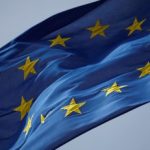

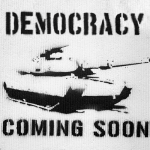
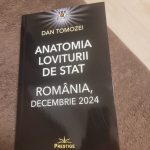

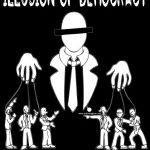



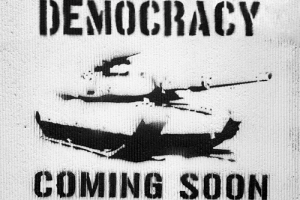
Adauga comentariu